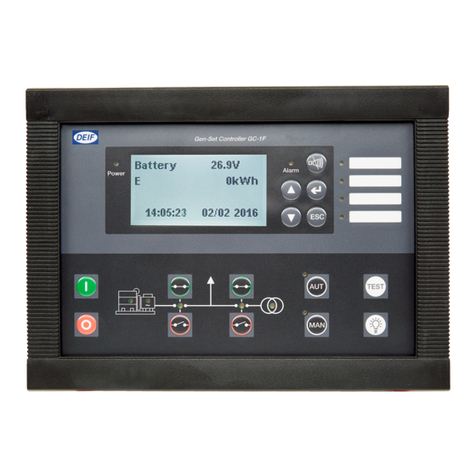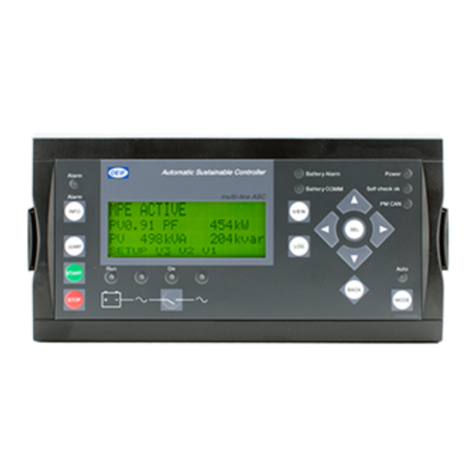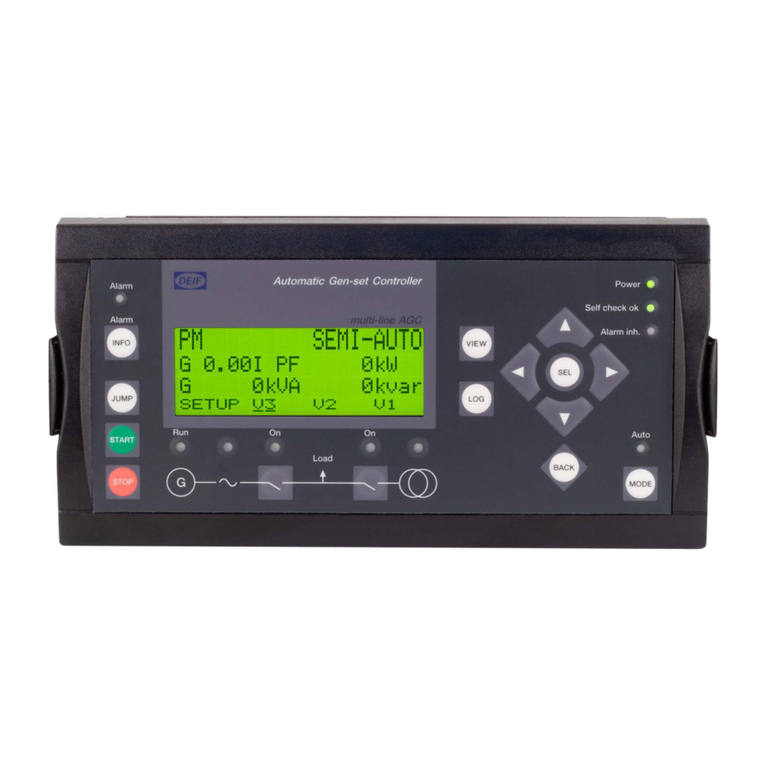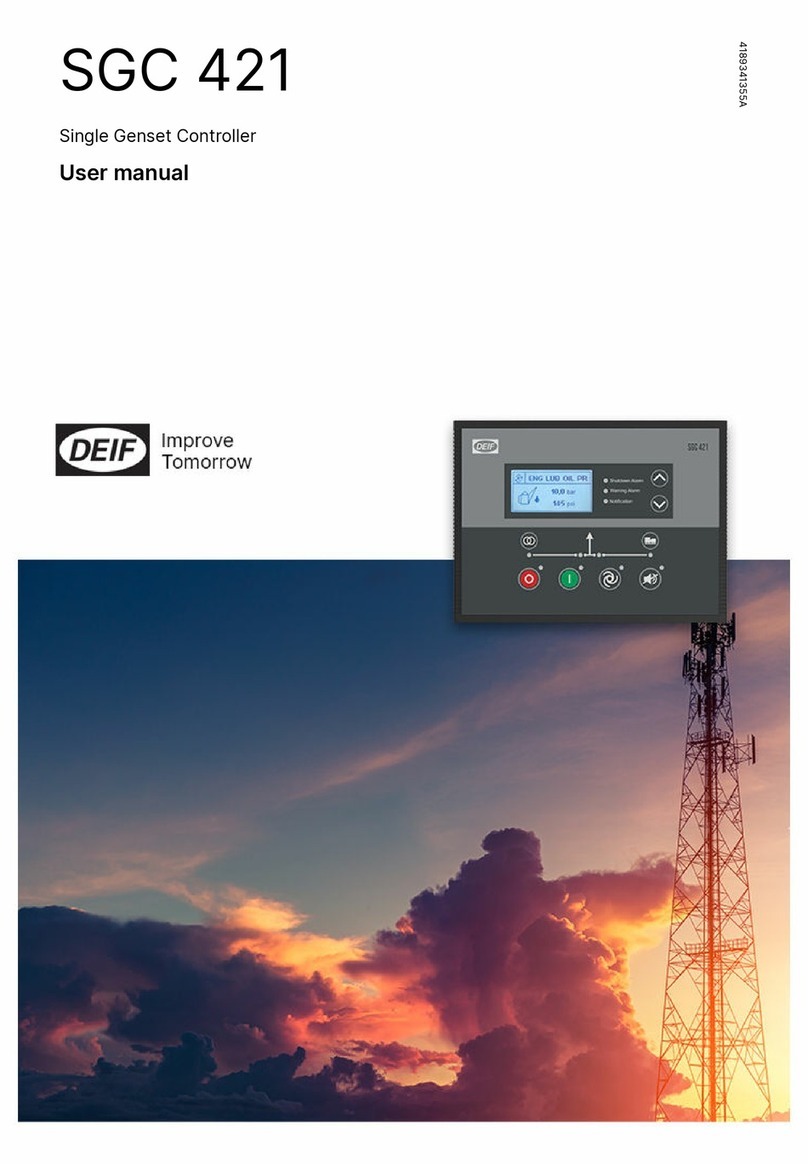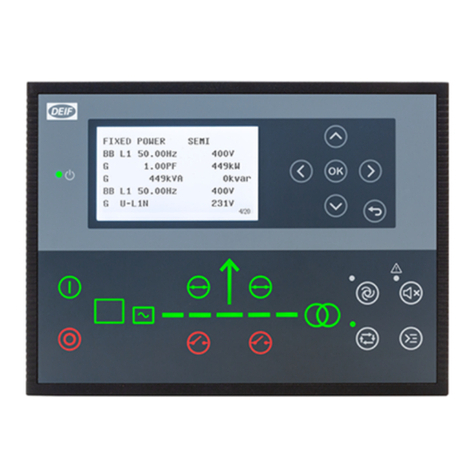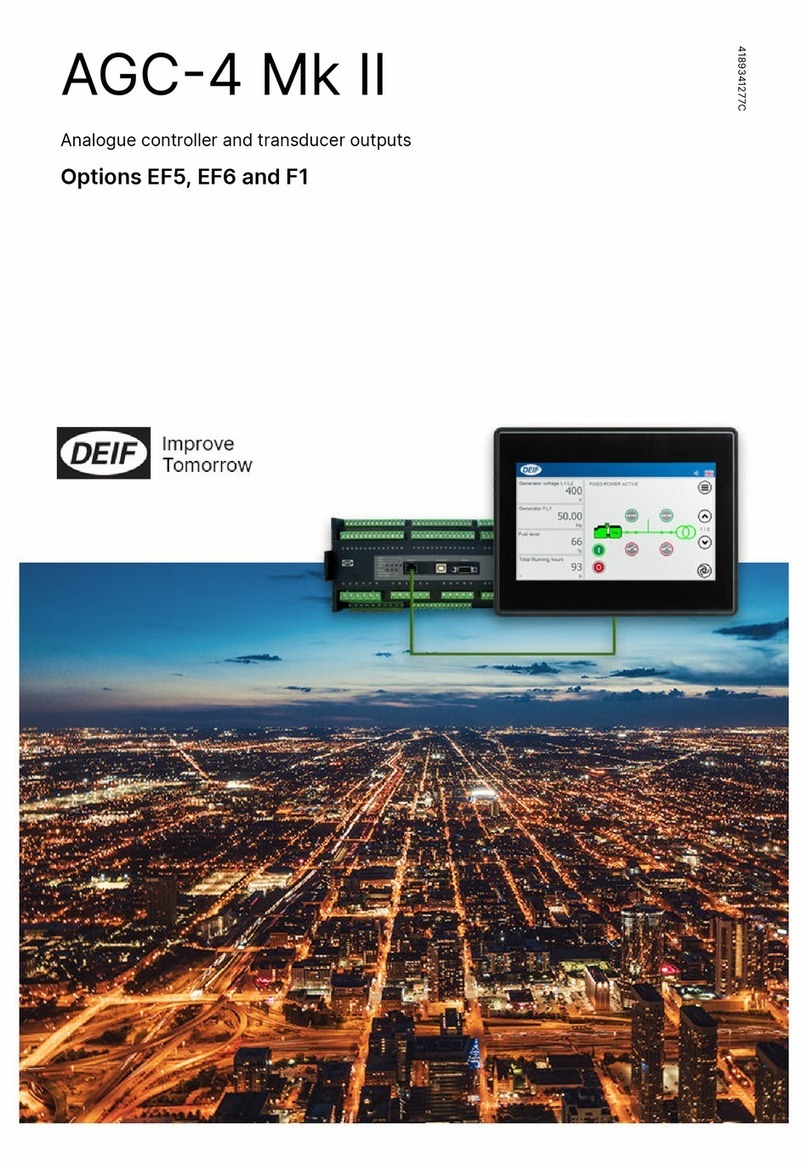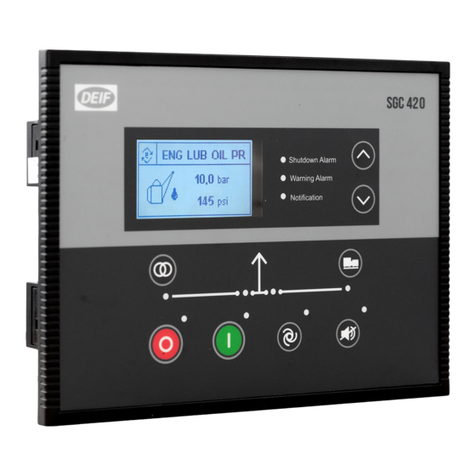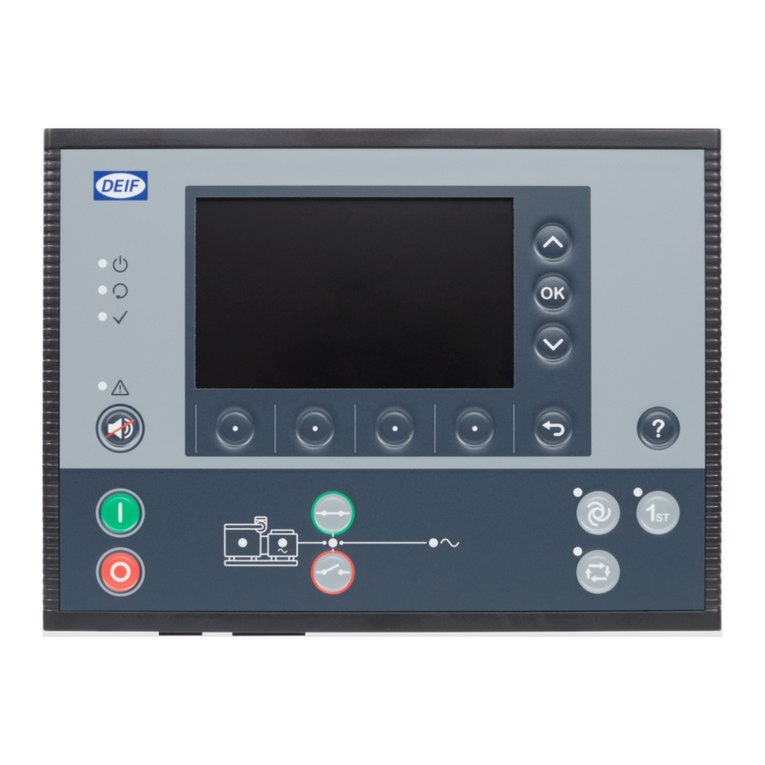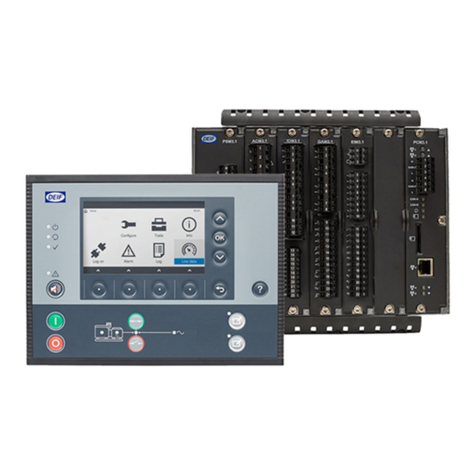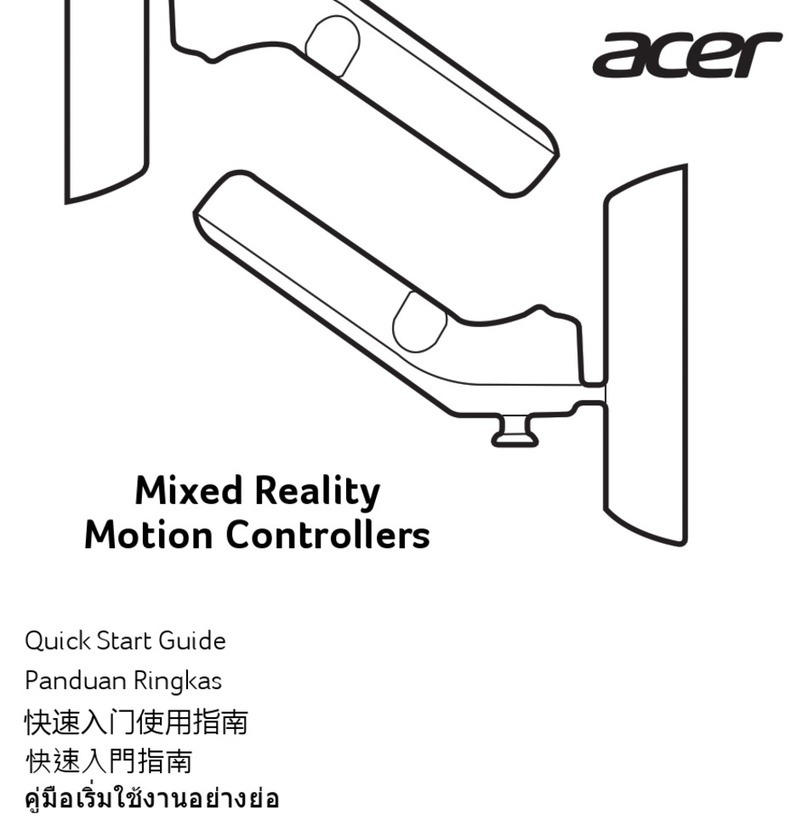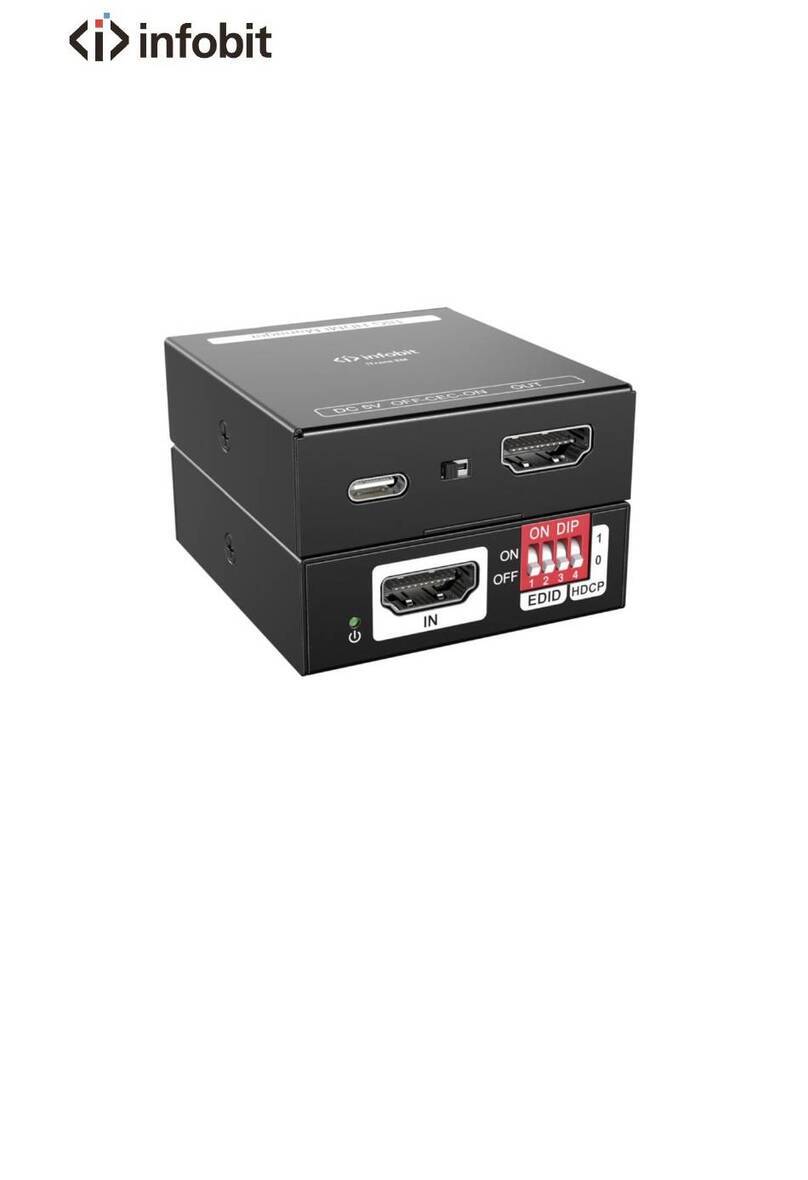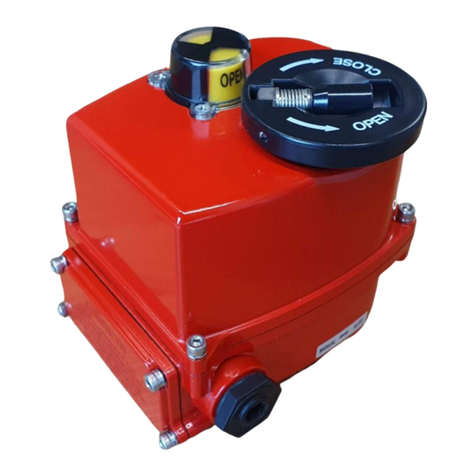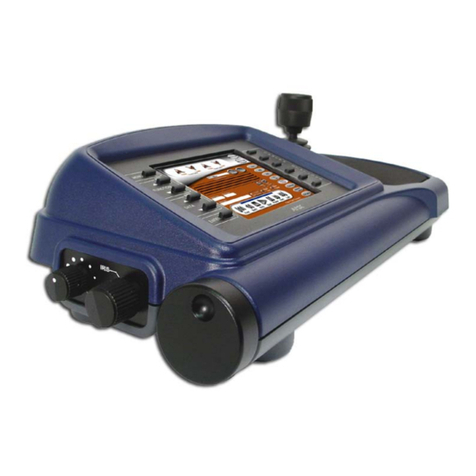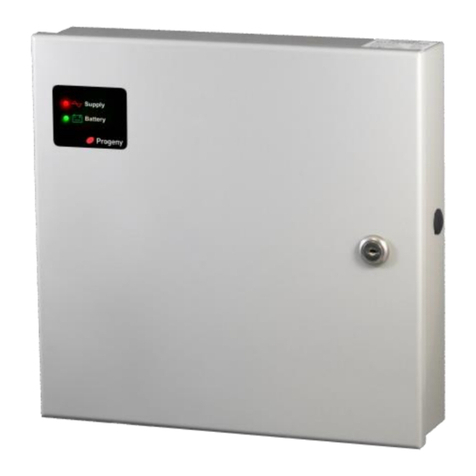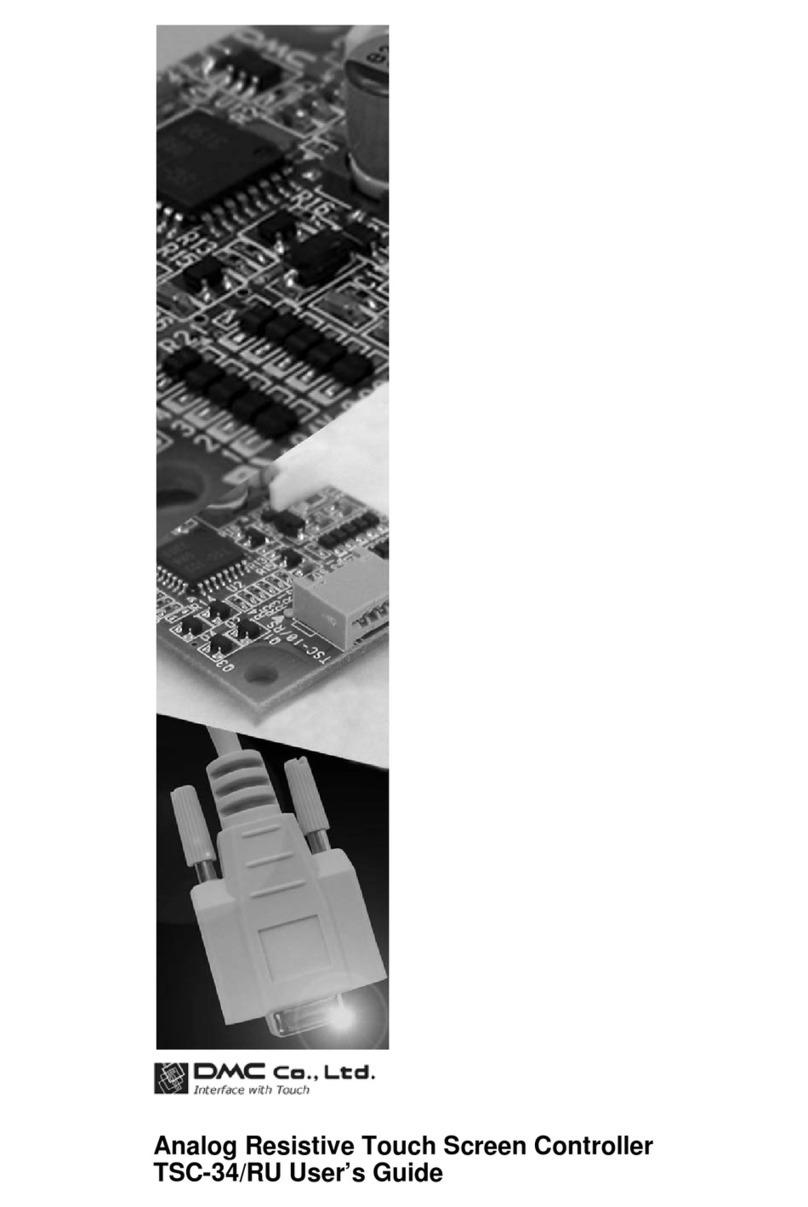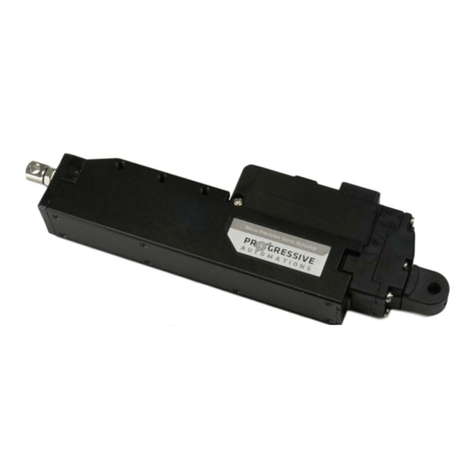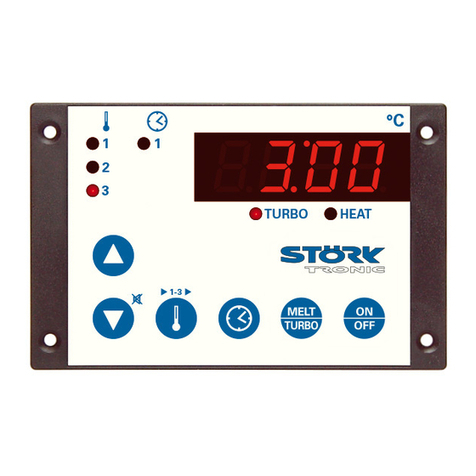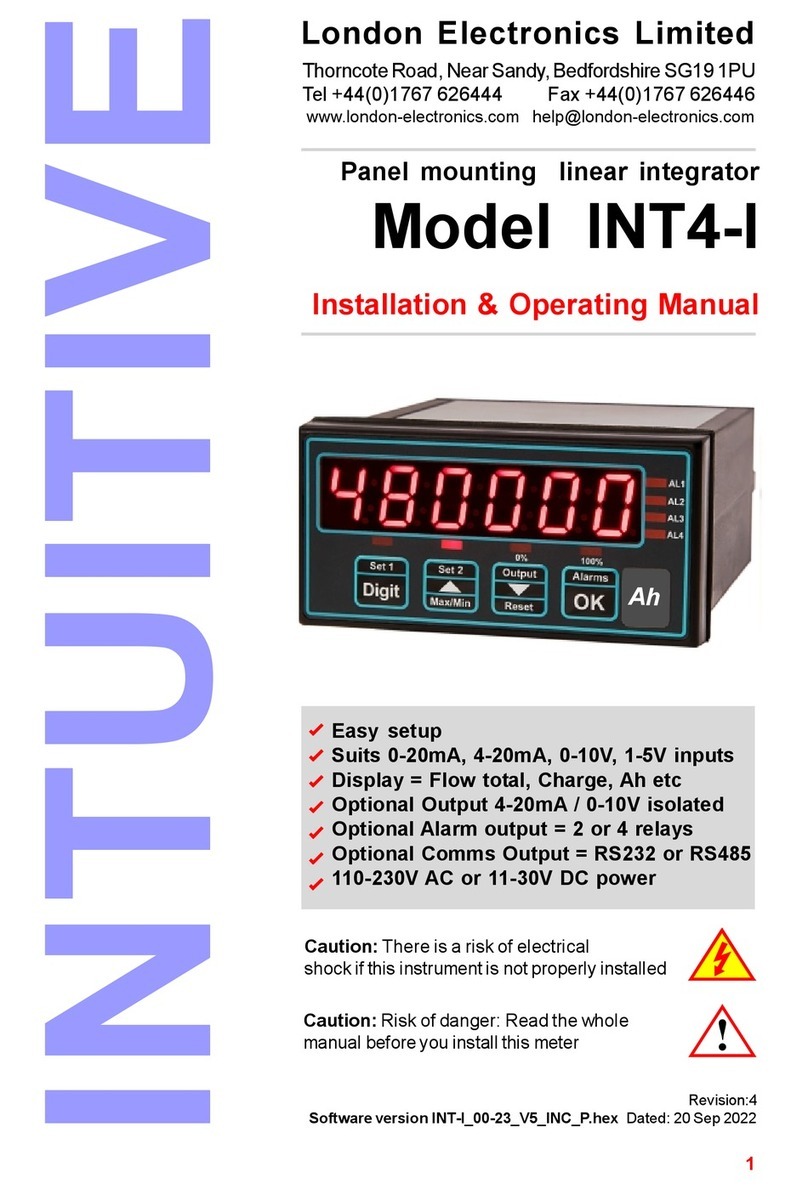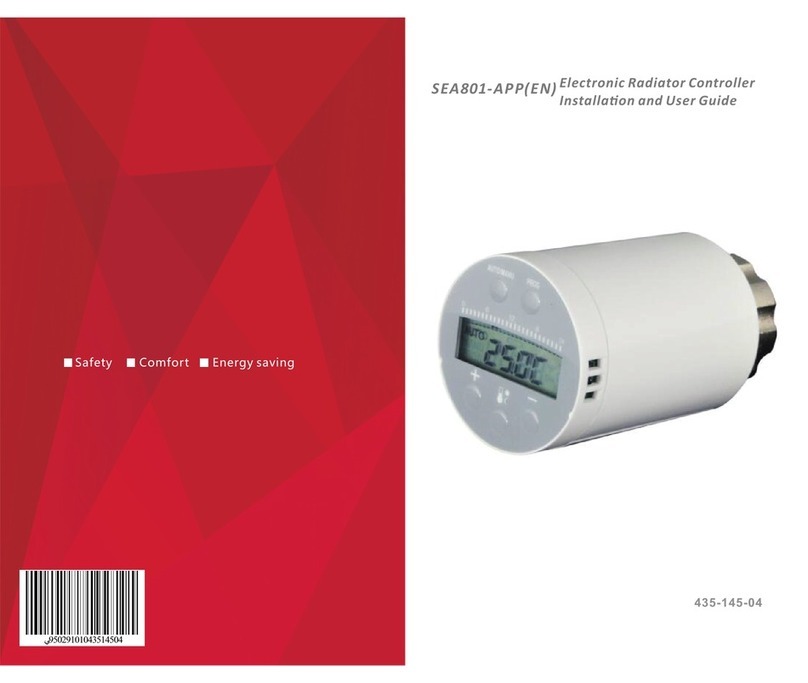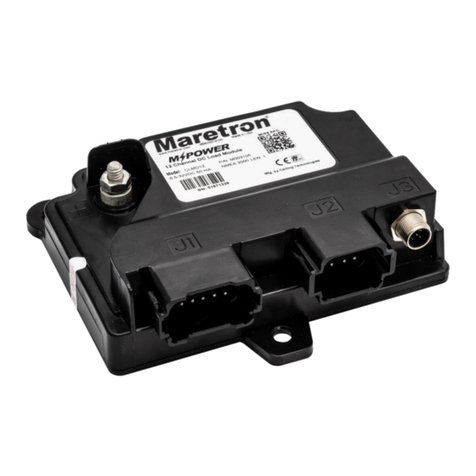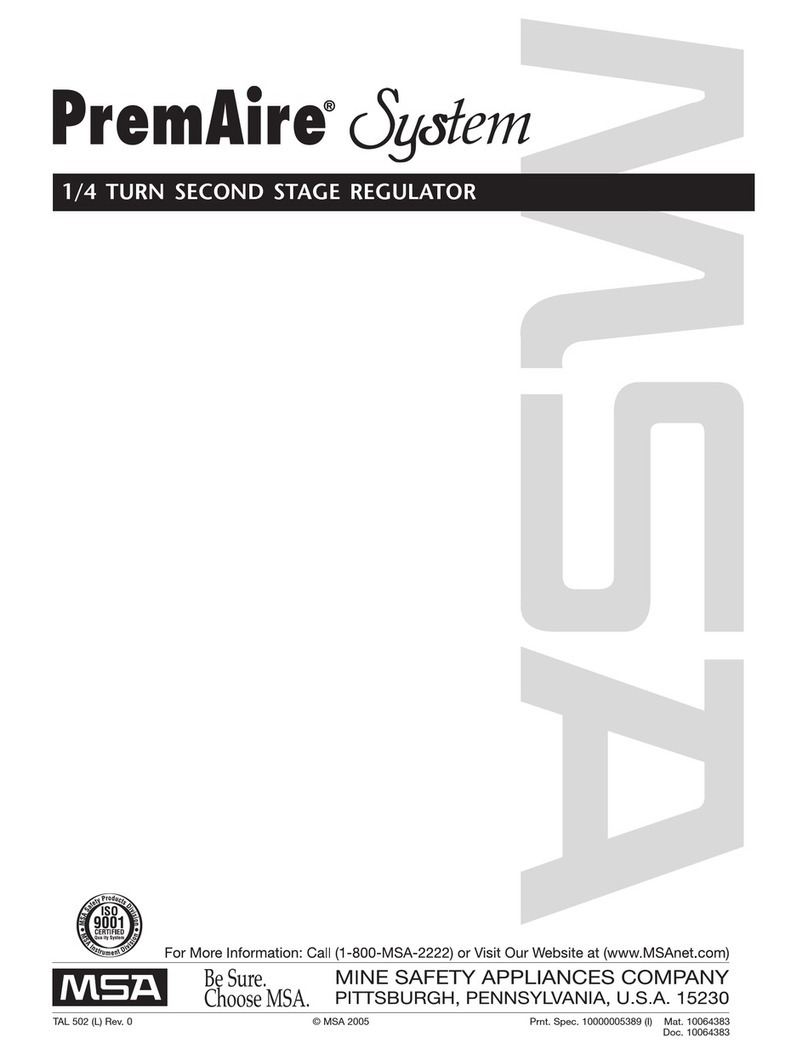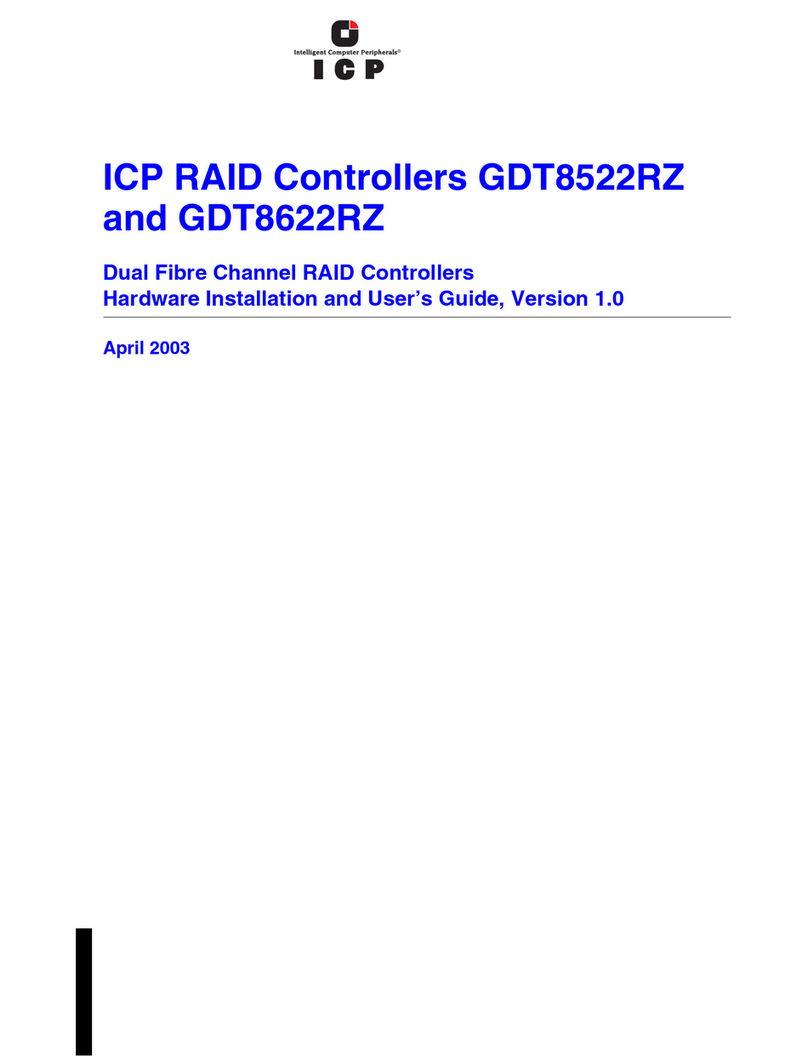Deif AGC 200 Series Instruction Manual

DEIF A/S · Frisenborgvej 33 · DK-7800 Skive · Tel.: +45 9614 9614 · Fax: +45 9614 9615 · info@deif.com · www.deif.com
DEIF A/S · Frisenborgvej 33 · DK-7800 Skive · Tel.: +45 9614 9614 · Fax: +45 9614 9615 · info@deif.com · www.deif.com
DEIF A/S · Frisenborgvej 33 · DK-7800 Skive · Tel.: +45 9614 9614 · Fax: +45 9614 9615 · info@deif.com · www.deif.com
MULTI-LINE 2
GENERAL GUIDELINES FOR COMMISSIONING
● Settings check
● Governor check
● AVR check
● Protections check
● Adjustment
● Troubleshooting
Document no.: 4189340703C
SW version:

1. Delimitation
1.1. Scope of General guidelines for commissioning.................................................................................... 4
1.1.1. Scope of document........................................................................................................................4
2. General information
2.1. Warnings, legal information and safety.................................................................................................. 5
2.1.1. Warnings and notes ......................................................................................................................5
2.1.2. Legal information and disclaimer ..................................................................................................5
2.1.3. Safety issues ................................................................................................................................ 5
2.1.4. Electrostatic discharge awareness ............................................................................................... 5
2.1.5. Factory settings ............................................................................................................................ 6
2.2. About the guidelines...............................................................................................................................6
2.2.1. General purpose............................................................................................................................6
2.2.2. Intended users...............................................................................................................................6
2.2.3. Contents and overall structure ......................................................................................................6
3. Commissioning of the Multi-line 2
3.1. Step by step........................................................................................................................................... 7
3.1.1. Step by step...................................................................................................................................7
4. Settings
4.1. Settings check........................................................................................................................................8
4.1.1. Settings..........................................................................................................................................8
4.1.2. Nominal values.............................................................................................................................. 8
4.1.3. Alarm settings................................................................................................................................9
4.1.4. Function control settings..............................................................................................................10
4.1.5. Synchronisation settings.............................................................................................................. 11
4.1.6. Speed controller settings............................................................................................................. 11
4.1.7. Voltage controller settings............................................................................................................12
5. Governor check
5.1. Instructions...........................................................................................................................................13
5.1.1. Instructions ................................................................................................................................. 13
5.2. Speed setting....................................................................................................................................... 13
5.2.1. Speed setting...............................................................................................................................13
5.2.2. Relay output.................................................................................................................................13
5.2.3. Analogue output...........................................................................................................................13
5.2.4. EIC, J1939 ..................................................................................................................................13
5.3. Speed droop.........................................................................................................................................14
5.3.1. Speed droop................................................................................................................................ 14
5.4. Speed range.........................................................................................................................................14
5.4.1. Speed range................................................................................................................................ 14
5.5. Terminals.............................................................................................................................................. 14
5.5.1. Terminals..................................................................................................................................... 14
5.5.2. Digital interfacing......................................................................................................................... 14
5.5.3. Analogue interfacing....................................................................................................................15
5.5.4. EIC, J1939 ..................................................................................................................................15
6. AVR check
6.1. Instructions...........................................................................................................................................17
6.1.1. Instructions.................................................................................................................................. 17
6.2. Voltage setting......................................................................................................................................17
6.2.1. Voltage setting............................................................................................................................. 17
6.2.2. Relay output.................................................................................................................................17
6.2.3. Analogue output...........................................................................................................................17
6.3. Voltage droop....................................................................................................................................... 17
6.3.1. Voltage droop...............................................................................................................................17
6.4. Voltage range....................................................................................................................................... 18
General guidelines for commissioning
4189340703 UK
DEIF A/S Page 2 of 25

6.4.1. Voltage range...............................................................................................................................18
6.5. Terminals.............................................................................................................................................. 18
6.5.1. Terminals..................................................................................................................................... 18
7. Protections
7.1. Protections check.................................................................................................................................19
7.1.1. Points to be considered............................................................................................................... 19
7.1.2. Considerations.............................................................................................................................19
7.1.3. Configuration of the protections...................................................................................................19
8. Adjustment
8.1. Adjustment overview............................................................................................................................ 21
8.1.1. Overview......................................................................................................................................21
8.2. Adjusting PID controller........................................................................................................................21
8.2.1. PID controller...............................................................................................................................21
8.2.2. Step 1, adjustment of the KP.......................................................................................................21
8.2.3. Step 2, adjustment of the Ti.........................................................................................................21
8.2.4. Step 3, adjustment of the Td........................................................................................................21
8.2.5. Step 4, readjustment of controller settings.................................................................................. 22
8.2.6. Manual governor and AVR control...............................................................................................22
8.2.7. Manual mode/switchboard control...............................................................................................22
8.2.8. Semi-auto mode (AGC 200/AGC-3/AGC-4 only).........................................................................22
8.2.9. Auto and test mode (AGC 200/AGC-3/AGC-4 only)....................................................................23
8.3. Relay output adjustments.....................................................................................................................23
8.3.1. Relay output adjustments............................................................................................................ 23
8.4. Resulting speed/voltage curve upon load change................................................................................23
8.4.1. Resulting speed/voltage curve upon load change.......................................................................23
9. Troubleshooting
9.1. Troubleshooting for Multi-line 2 and Uni-line products......................................................................... 25
9.1.1. Remedy of problem..................................................................................................................... 25
General guidelines for commissioning
4189340703 UK
DEIF A/S Page 3 of 25

1. Delimitation
1.1 Scope of General guidelines for commissioning
1.1.1 Scope of document
This document covers the following products:
AGC 200 series SW version 3.5x.x or later
AGC-3 SW version 3.3x.x or later
AGC-4 SW version 4.0x.x or later
GPC-3/GPU-3 Hydro SW version 3.0x.x or later
AGC PM SW version 5.03.x or later
GPU-3/PPU-3 SW version 3.0x.x or later
PPM-3 SW version 3.0x.x or later
General guidelines for commissioning
4189340703 UK
Delimitation
DEIF A/S Page 4 of 25

2. General information
2.1 Warnings, legal information and safety
2.1.1 Warnings and notes
Throughout this document, a number of warnings and notes with helpful user information will be presented.
To ensure that these are noticed, they will be highlighted as follows in order to separate them from the gener-
al text.
Warnings
Warnings indicate a potentially dangerous situation, which could result in death, personal in-
jury or damaged equipment, if certain guidelines are not followed.
Notes
Notes provide general information, which will be helpful for the reader to bear in mind.
2.1.2 Legal information and disclaimer
DEIF takes no responsibility for installation or operation of the generator set. If there is any doubt about how
to install or operate the engine/generator controlled by the Multi-line 2 unit, the company responsible for the
installation or the operation of the set must be contacted.
The Multi-line 2 unit is not to be opened by unauthorised personnel. If opened anyway, the war-
ranty will be lost.
Disclaimer
DEIF A/S reserves the right to change any of the contents of this document without prior notice.
The English version of this document always contains the most recent and up-to-date information about the
product. DEIF does not take responsibility for the accuracy of translations, and translations might not be up-
dated at the same time as the English document. If there is a discrepancy, the English version prevails.
2.1.3 Safety issues
Installing and operating the Multi-line 2 unit may imply work with dangerous currents and voltages. Therefore,
the installation should only be carried out by authorised personnel who understand the risks involved in work-
ing with live electrical equipment.
Be aware of the hazardous live currents and voltages. Do not touch any AC measurement in-
puts as this could lead to injury or death.
2.1.4 Electrostatic discharge awareness
Sufficient care must be taken to protect the terminals against static discharges during the installation. Once
the unit is installed and connected, these precautions are no longer necessary.
General guidelines for commissioning
4189340703 UK
General information
DEIF A/S Page 5 of 25

2.1.5 Factory settings
The Multi-line 2 unit is delivered from factory with certain factory settings. These are based on average values
and are not necessarily the correct settings for matching the engine/generator set in question. Precautions
must be taken to check the settings before running the engine/generator set.
2.2 About the guidelines
2.2.1 General purpose
This document includes general guidelines for commissioning of DEIF’s Multi-line 2 units. It mainly includes
instructions for settings, governor, AVR and protections check and unit adjustment. The general purpose of
the document is to supply general guidelines to be used in the commissioning of the Multi-line 2.
Please make sure to read this document before starting to work with the Multi-line 2 unit and
the genset to be controlled. Failure to do this could result in human injury or damage to the
equipment.
2.2.2 Intended users
These guidelines are mainly intended for the person responsible for the commissioning of the unit. In most
cases, this would be a commissioning engineer.
2.2.3 Contents and overall structure
This document is divided into chapters, and in order to make the structure simple and easy to use, each
chapter will begin from the top of a new page.
General guidelines for commissioning
4189340703 UK
General information
DEIF A/S Page 6 of 25

3. Commissioning of the Multi-line 2
3.1 Step by step
3.1.1 Step by step
The illustration below indicates the overall steps to be followed in order to carry out a successful commission-
ing of the Multi-line 2 unit.
Step 1 Settings check
Step 2 Governor check
Step 3 AVR check
Step 4 Protections check
Step 5 Adjustment
In addition, the generic troubleshooting in the chapter "Troubleshooting" can be used.
General guidelines for commissioning
4189340703 UK
Commissioning of the Multi-line 2
DEIF A/S Page 7 of 25

4. Settings
4.1 Settings check
4.1.1 Settings
It is necessary to perform a settings check. This is done by following these five individual steps:
1. Check and adjust the nominal settings.
2. Check and adjust the alarm settings.
3. Check and adjust the function control settings.
4. Check and adjust the speed controller settings.
5. Check and adjust the voltage controller settings.
The above-mentioned settings must be checked and adjusted prior to the initial starting of the genset.
The settings can be adjusted either through the display or through the PC utility software. For
navigating in the menus, see the Operator’s Manual.
4.1.2 Nominal values
The nominal values of the Multi-line 2 are adjusted in the general part of the system setup menu.
In the PC utility software, it is presented as illustrated on the above screen dump. The correct values are sup-
plied by the switchboard manufacturer.
General guidelines for commissioning
4189340703 UK
Settings
DEIF A/S Page 8 of 25

4.1.3 Alarm settings
The alarm settings are adjusted in the protection setup menu.
In the PC utility software, it is presented as illustrated on the screen dump above or similar. The number of
alarms depends on the options selection of the individual unit. The actual alarm parameters are adjusted ac-
cording to costumer requirements and application requirements.
General guidelines for commissioning
4189340703 UK
Settings
DEIF A/S Page 9 of 25

4.1.4 Function control settings
The function control settings are adjusted in the general part of the system setup menu.
In the screen dump above, only some of the settings are illustrated. Since the function control settings include
parameters for the entire functionality of the Multi-line 2, they must be stepped through carefully. The function
control settings are adjusted according to the desired unit control.
In need of detailed information about the requirements, contact the switchboard manufacturer.
General guidelines for commissioning
4189340703 UK
Settings
DEIF A/S Page 10 of 25

4.1.5 Synchronisation settings
The ML-2 synchronisation settings are adjusted in the synchronisation part of the control setup menu.
GPU/GPU Hydro: synchronisation requires option G2.
4.1.6 Speed controller settings
The Multi-line 2 speed controller settings are adjusted in the regulation part of the control setup menu.
The screendump below illustrates the controller settings related to the speed governor. As an initial setting
before the first start up, the Kp of the frequency and power controllers are set to a low value giving a slow
regulation.
General guidelines for commissioning
4189340703 UK
Settings
DEIF A/S Page 11 of 25

Analogue controller or EIC, J1939
As an initial setting before the first start up, the Kp , Ti and Td of the frequency and power controllers are set
to a value giving a slow regulation. This means that Kp and Td should be set to a low value, and Ti should be
set to a high value.
4.1.7 Voltage controller settings
The voltage controller settings are adjusted in the regulation part of the control setup menu.
The screendump above illustrates the controller settings of the voltage and reactive power controller. As an
initial setting before the first start up, the Kp of the voltage and reactive power controllers are set to a low
value giving a slow regulation.
Analogue controller or J1939
As an initial setting before the first start up, the Kp, Ti and Td of the frequency and power controllers are set to
a value giving a slow regulation. This means that Kp and Td should be set to a low value, and Ti should be
set to a high value.
General guidelines for commissioning
4189340703 UK
Settings
DEIF A/S Page 12 of 25

5. Governor check
5.1 Instructions
5.1.1 Instructions
Even if the engine manufacturer has adjusted the governor, it is necessary to carry out the following adjust-
ments to be sure that the Multi-line 2 can successfully operate with the speed governor.
The governor should be tuned in according to the governor/engine manufacturer’s instructions. It is important
that the engine is able to run smoothly and without hunting, before the control function of the Multi-line 2 is
activated.
5.2 Speed setting
5.2.1 Speed setting
An initial speed setting must be made.
The speed setting procedure is depending on the interfacing.
5.2.2 Relay output
● Disable the outputs from the Multi-line 2.
● Run the generator with no load (open generator breaker).
● Adjust the frequency (on the speed governor) to be base frequency (50 or 60 Hz).
5.2.3 Analogue output
The analogue output is a +/-25 mA or 0-20 mA (depending on option) signal which in most cases must be
converted into a voltage using a resistor across the terminals (150 Ω gives 3V DC at 20 mA, etc).
The AGC 200 series has no analogue outputs. If analogue outputs are needed, the IOM 200 series external
interface unit must be used.
Given the fact that especially the governors are sensitive to the external circuit impedance, it is essential to
carry out the initial setting of speed governor while the Multi-line 2 is connected and the control function disa-
bled.
Putting the Multi-line 2 in manual operation, (AGC 200/AGC-3/AGC-4 = MAN, PPM = switchboard control)
disables the control function. This will "disable" the control outputs, but the generator protection is still active.
If you fail to do this, you may experience control problems later on.
● Set the unit in manual operation/switchboard control.
● Reboot the unit or activate the input "reset analogue controller outputs".
● Run the generator with no load (open generator breaker).
● Set the frequency (on the speed governor) to be base frequency (50 or 60 Hz).
5.2.4 EIC, J1939
The speed setting is not possible to adjust because the proper rpm is adjusted in the ECU from the factory
side.
General guidelines for commissioning
4189340703 UK
Governor check
DEIF A/S Page 13 of 25

5.3 Speed droop
5.3.1 Speed droop
The speed governor must have a speed droop of 3-4% (speed dropping 3-4% from no load to full load, when
the Multi-line 2 is not in control). In order to ensure equal load sharing on parallel running machines, all gov-
ernors must have the same droop setting.
DEIF recommends adjusting the speed droop on the speed governor for stability purposes.
It is necessary in all cases when relay outputs for governor control is used.
When analogue interfacing is used, it is possible to operate with a speed droop adjustment of
0%, but for safety reasons it is recommended to use the speed droop adjustment.
5.4 Speed range
5.4.1 Speed range
When using the analogue interfacing, the resistor installed across the output terminals is selected to obtain
the necessary speed range. When finding the correct resistor, several aspects must be considered.
The necessary speed range must be selected, so it is possible to operate at full load. Typically, this is fNOM
+3 Hz. If the speed range is too high, the resistor size must be decreased. If the speed range is too low, the
resistor size must be increased.
The speed range must allow for the full load of the genset. If full load cannot be reached, then
the resistor size must be increased.
5.5 Terminals
5.5.1 Terminals
The governor can either be prepared for analogue interfacing or digital interfacing. When analogue interfacing
is used, a +/-25 mA or 0-20 mA signal from the Multi-line 2 is applied. This signal can be converted to the
necessary voltage level. When digital interfacing is used, two relays are used as increase/decrease outputs.
The terminals must be identified depending on the necessary interfacing. Some general examples are shown
in the following illustrations.
5.5.2 Digital interfacing
Motor potmeter
General guidelines for commissioning
4189340703 UK
Governor check
DEIF A/S Page 14 of 25

+
0
In GOV
up
down
Multi-line 2 M
Direct digital signals
up
down GOV
up
down
Multi-line 2
5.5.3 Analogue interfacing
Direct analogue signal
GOV
Multi-line 2
±25mA R
External potmeter
GOV
Multi-line 2
±25mA
+
0
In
R
R
5.5.4 EIC, J1939
The interface is between CAN L and CAN H.
General guidelines for commissioning
4189340703 UK
Governor check
DEIF A/S Page 15 of 25

Deif unit
CANbus interface
H GND L
Engine system
CANbus interface
H GND L
120 Ω 120 Ω
For additional information about interfaces, see the document "Interfacing DEIF Equipment,
application notes 4189340670 UK" available on www.deif.com.
General guidelines for commissioning
4189340703 UK
Governor check
DEIF A/S Page 16 of 25

6. AVR check
6.1 Instructions
6.1.1 Instructions
Even if the AVR is adjusted by the genset manufacturer, it is necessary to go through the following adjust-
ments in order to be sure that the Multi-line 2 can operate with the AVR.
The AVR should be tuned in according to the AVR/generator manufacturer’s instructions. It is imperative that
the genset is able to operate smoothly, before the control function of the Multi-line 2 is activated.
6.2 Voltage setting
6.2.1 Voltage setting
An initial voltage level setting must be made.
The voltage level setting procedure is depending on the interfacing.
6.2.2 Relay output
● Disable the outputs from the Multi-line 2.
● Run the generator with no load (open generator breaker).
● Adjust the voltage (on the AVR) to be nominal voltage.
6.2.3 Analogue output
The analogue output is a +/-25 mA or 0-20 mA (depending on option) signal which in most cases has to be
converted into a voltage using a resistor across the terminals (150 Ω gives 3V DC at 20 mA etc).
The AGC 200 series has no analogue outputs. If analogue outputs are needed, the IOM 200 series external
interface unit must be used.
Given the fact that especially the AVRs are sensitive to the external circuit impedance, it is essential to carry
out the initial setting of the AVR while the Multi-line 2 is connected and the control function disabled.
Putting the Multi-line 2 in manual operation, (AGC 200/AGC-3/AGC-4 = MAN, PPM = switchboard control)
disables the control function. This will ‘disable’ the control outputs, but the generator protection is still active. If
you fail to do this, you may experience control problems later on.
● Set the unit in manual operation/switchboard control.
● Reboot the unit or activate the input "reset analogue controller outputs".
● Run the generator with no load (open generator breaker).
● Set the voltage (on the AVR) to be nominal voltage.
6.3 Voltage droop
6.3.1 Voltage droop
The AVR controls the generator voltage in a way which is comparable to the speed governor controlling the
prime mover speed.
General guidelines for commissioning
4189340703 UK
AVR check
DEIF A/S Page 17 of 25

This means that the generator AVR must have a voltage droop of 3-4% (voltage dropping 3-4% from no load
to full reactive load when the Multi-line 2 has no control). In order to ensure equal VAr sharing on parallel
running generators, all generators must have the same voltage droop setting.
6.4 Voltage range
6.4.1 Voltage range
When using the analogue interfacing, the resistor installed across the output terminals is selected to obtain
the necessary speed range. The voltage range must be defined similar to the speed range for the governor.
The voltage range must be wide enough for the voltage droop and for the full loading of the genset. A typical
value is +/-10% * UNOM. The necessary control signal level is often specified depending on the AVR type.
6.5 Terminals
6.5.1 Terminals
The AVR can either be prepared for analogue interfacing or digital interfacing. When analogue interfacing is
used, a +/-25 mA or 0-20 mA signal from the Multi-line 2 is applied. This signal can be converted to the nec-
essary voltage level. When the digital interfacing is used, two relays are used as increase/decrease outputs.
The AGC 200 series has no analogue outputs. If analogue outputs are needed, the IOM 200 series external
interface unit must be used.
The terminals must be identified depending on the necessary interfacing. Some general examples are shown
in the illustrations in the chapter "Governor check".
General guidelines for commissioning
4189340703 UK
AVR check
DEIF A/S Page 18 of 25

7. Protections
7.1 Protections check
7.1.1 Points to be considered
As a part of the commissioning, the protections should be checked.
The following points must be considered for each alarm:
● Alarm setpoint
● Alarm delay
● Relay output
● Activation
● Fail class
● Inhibits
For further information about the above-mentioned, see the Designer’s Reference Handbook.
7.1.2 Considerations
Several issues must be taken into consideration when doing the configuration of the alarms. These are e.g.
national rules and requirements, additionally installed protection equipment, required use of the protections
(trip of non-essential load, breaker tripping and engine stopping).
The switchboard manufacturer and the end customer must take these considerations.
7.1.3 Configuration of the protections
The dialogue box shows a typical alarm.
General guidelines for commissioning
4189340703 UK
Protections
DEIF A/S Page 19 of 25

In the "commissioning" field above, the horizontal blue line indicates the elapsed time since
the alarm setpoint was exceeded. In this example, the generator reverse power setpoint is -5%.
If the commissioning is done without the PC utility software, the timers can be seen in the serv-
ice menu 9120.
General guidelines for commissioning
4189340703 UK
Protections
DEIF A/S Page 20 of 25
Other manuals for AGC 200 Series
4
This manual suits for next models
8
Table of contents
Other Deif Controllers manuals

Deif
Deif PICUS PPM 300 User manual
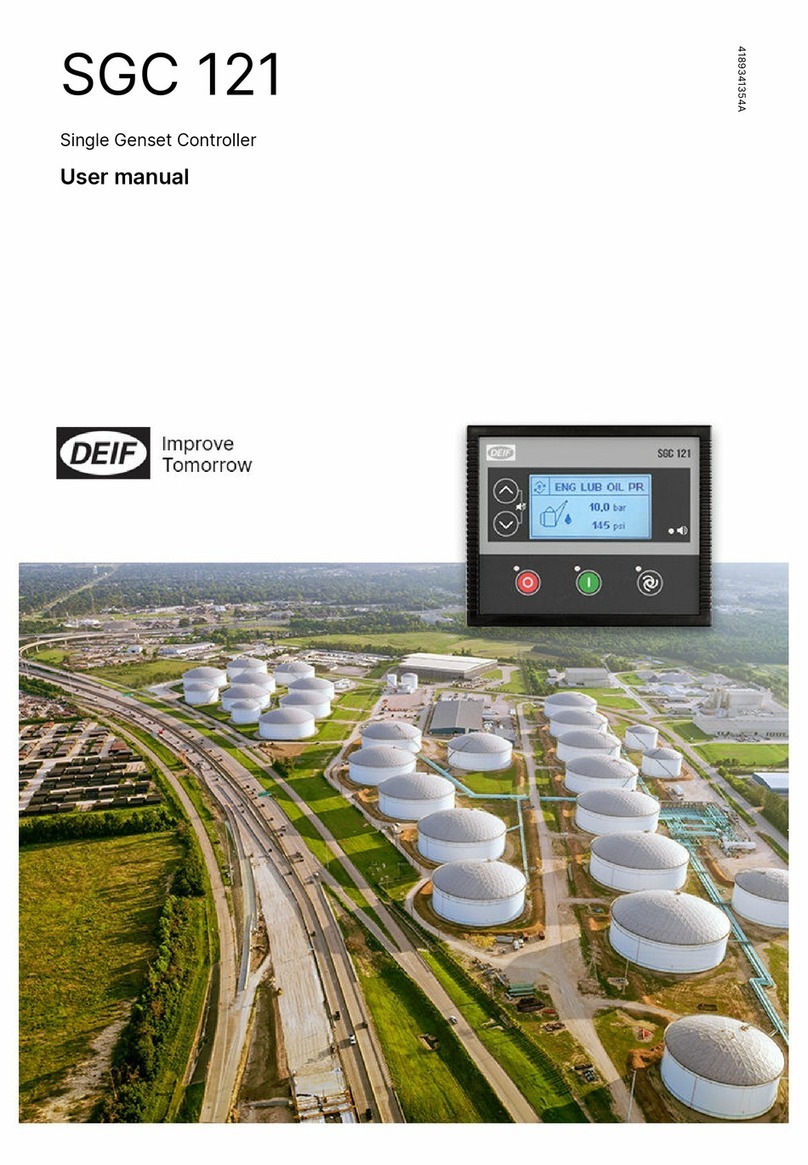
Deif
Deif SGC 121 User manual

Deif
Deif CGC 400 User manual
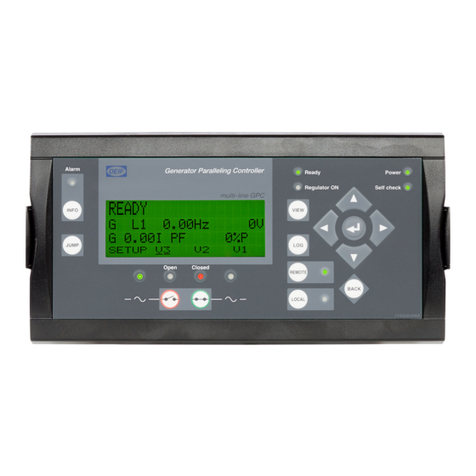
Deif
Deif GPC-3 Hydro User manual
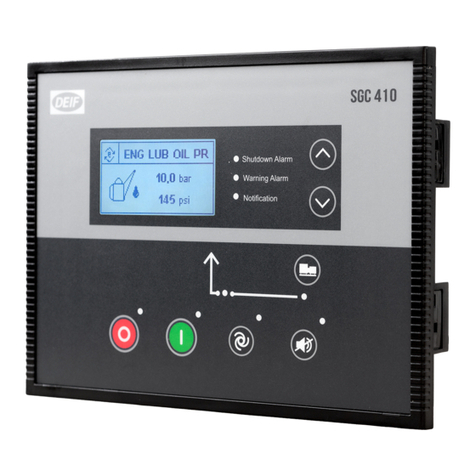
Deif
Deif SGC 410 User manual
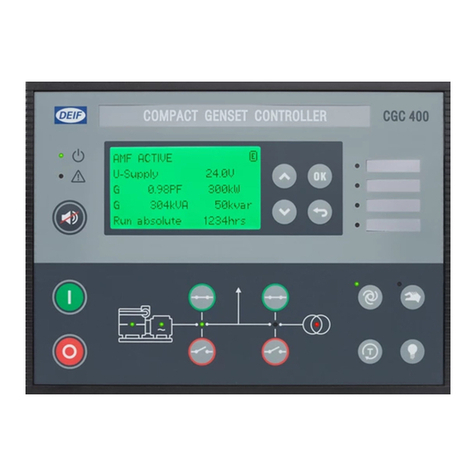
Deif
Deif CGC 400 Product guide
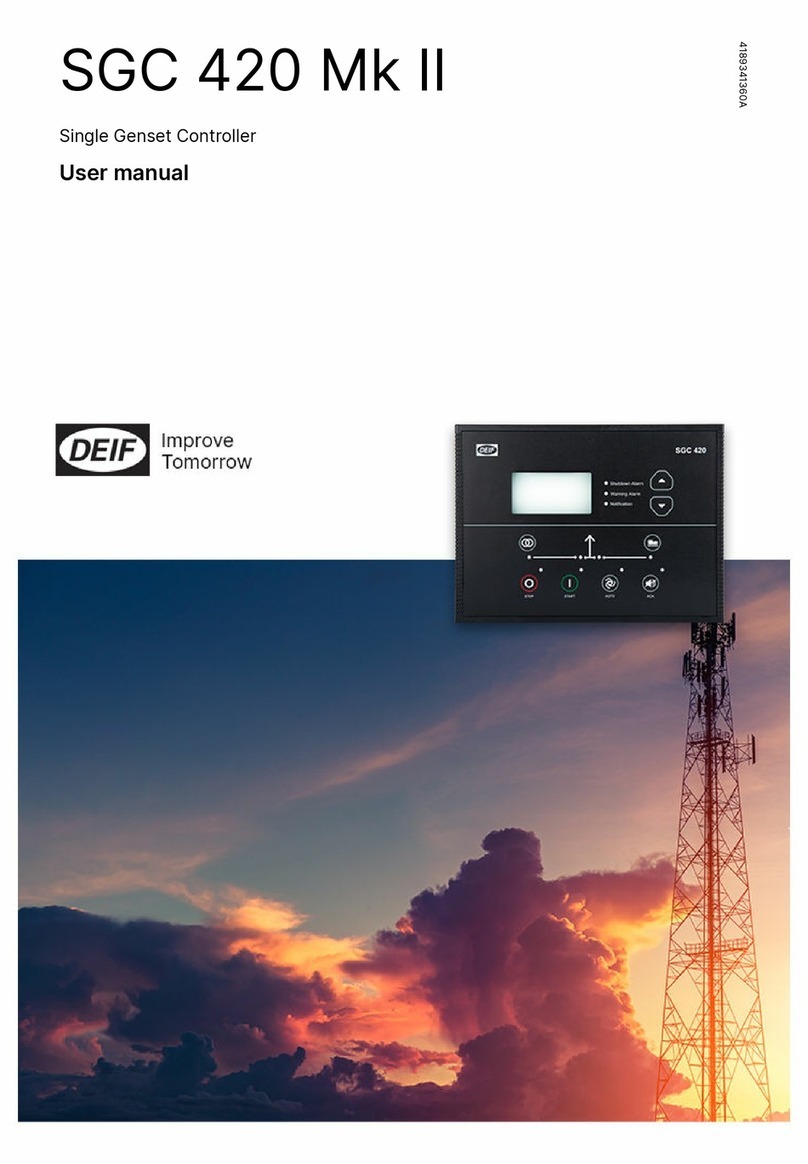
Deif
Deif SGC 420 Mk II User manual
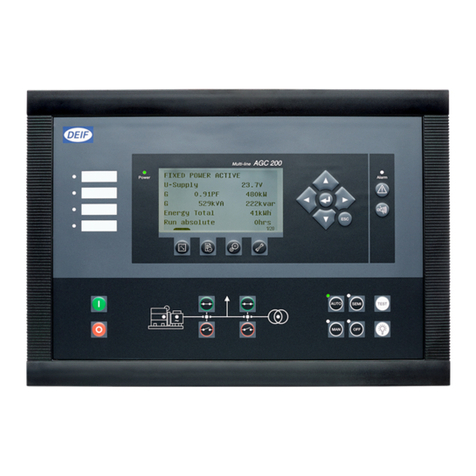
Deif
Deif AGC 200 User manual
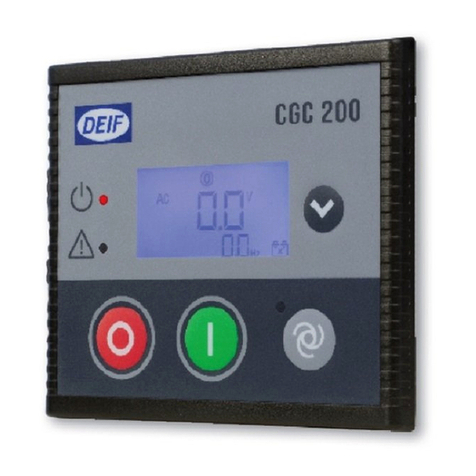
Deif
Deif CGC 200 Installation and operation manual
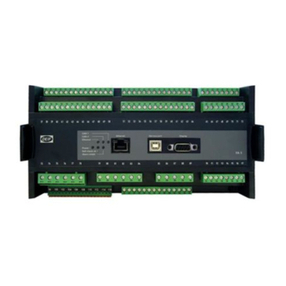
Deif
Deif AGC-4 Mk II User manual
